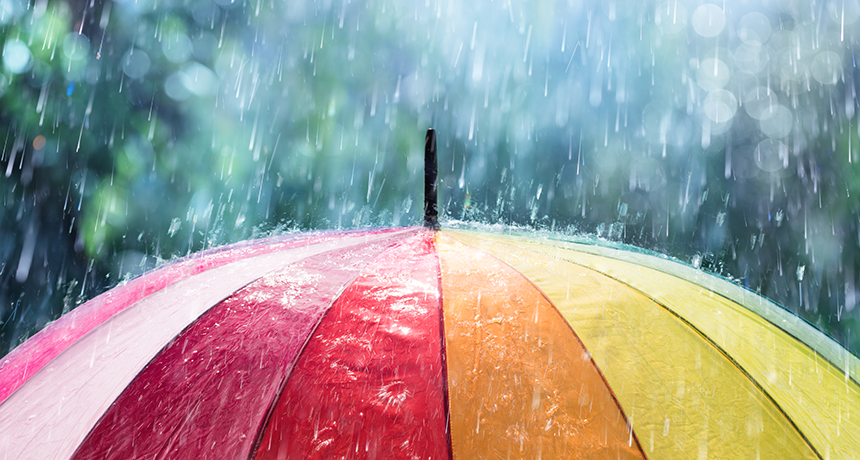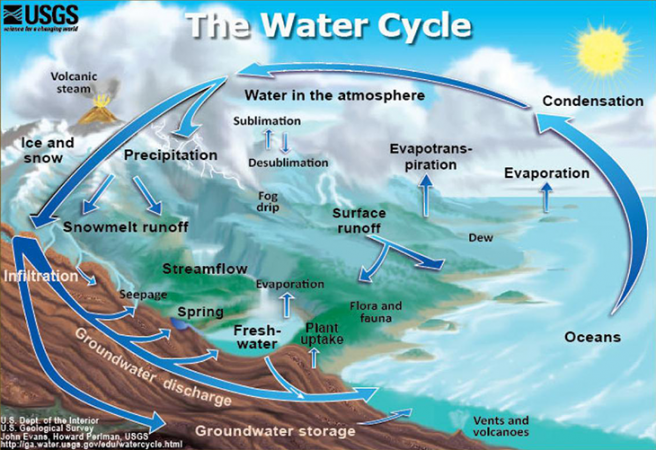Explainer: Earth’s water is all connected in one vast cycle
Water is constantly on the move in an endless loop known as the water cycle

Rain is just one part of the planet’s water cycle.
RomoloTavani/iStockphoto
By Beth Geiger
It’s a summer day at the lake. Creeks spill into the clear water. Puffy clouds roll across the sky. On the horizon, a grey curtain of rain sweeps across distant snow-capped peaks.
This is Earth’s water cycle in action. Water, shape-shifting through three phases — liquid, vapor and ice — is on the move 24/7. As it moves, it connects every environment and living thing on the planet. Without the water cycle to replenish, clean and transport water, life on Earth could not exist.
The water cycle is driven by a series of linked processes in an endless loop.

Let’s start with evaporation. Heat from the sun causes liquid water from oceans, rivers and lakes to evaporate into an invisible vapor. Because vapor is lighter than air, it rises into the atmosphere.
Water vapor also enters the water cycle through transpiration. This is the process of water moving through plants and being released from plant leaves as vapor into the atmosphere. Transpiration accounts for about 10 percent of the water vapor in the atmosphere.
Next up is condensation. As water vapor rises, it cools. Cooling causes the vapor to condense, or re-organize, into tiny droplets. We see those droplets as clouds. Condensation and evaporation constantly shape and reshape clouds. Watch a cloud, and you will see that even as some parts of it evaporate and disappear, other parts grow where condensation is occurring.
Transportation of water occurs as water vapor is moved from place to place with wind, stream currents and clouds.
Precipitation happens when cloud droplets merge into bigger drops. They may collect around particles such as ice, dust or smoke, or they may freeze into ice crystals. When the drops are heavy enough, down they come as rain, hail, sleet or snow. Not all precipitation reaches the ground. Some evaporates instead, or is transported back up by air currents, even as other drops fall.
When precipitation does reach the ground, several things can happen. Water may infiltrate, or soak into, the soil, and percolate deeper into the ground. It may run off right away, collecting in trickles and torrents as it flows downhill across the surface. Or, it may be intercepted by plants, collecting in leaves or taken up by their roots.
Then, there may be a lull in the action, called storage. Water may collect in lakes, ice, snow or underground (as groundwater). But eventually, snow melts, lakes drain or evaporate, and ice changes back to liquid or vapor. Even groundwater moves, ever so slowly, as it makes its way back to the surface.
Then the water cycle repeats, starting with evaporation once again.
The water cycle is as old as life itself. Yet scientists are still working out important details of the roles these different processes play, says Patrick Keys. Keys is a sustainability scientist at Colorado State University in Fort Collins. And, he adds, people can play a big role in that water cycle.
“What we do to the land around us — like cutting down a lot of trees or planting crops in dry places — can lead to enormous changes in evaporation and transpiration, the invisible parts of the water cycle,” he says. “These changes to the land can sometimes lead to big changes in the amount of rain a location downwind may receive.”
National Science Foundation/YouTube







